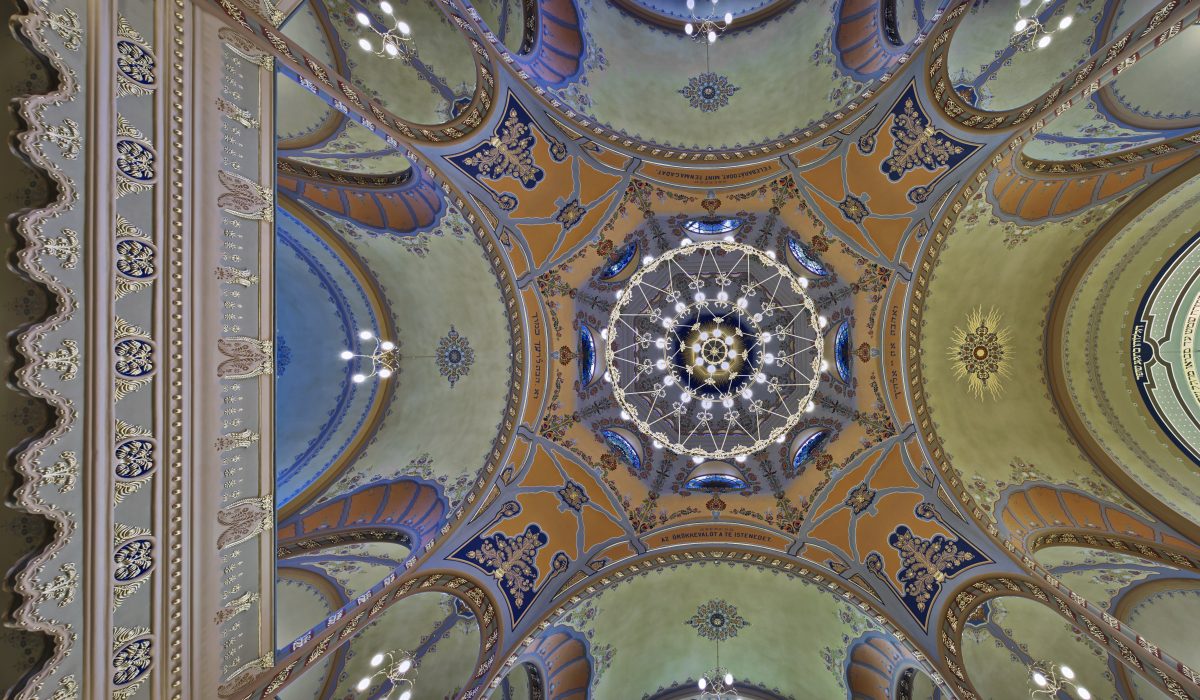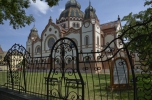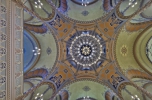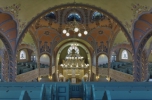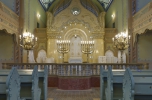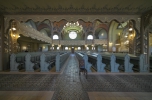Renaissance and reinterpretation
The Reconstruction of the Synagogue in Subotica
Architects: Marcell Komor, Dezső Jakab (1902), Gordana Prčić Vujnović (2018)
Text and photos: Rudolf Klein
After decades of patchwork renovations, the synagogue in Subotica was gorgeously renovated in international co-operation in the past few decades. The World Monument Fund gave both moral and financial support to catalyse the project, and later on the Serbian state also joined to make its own contribution. Thanks to these two resources the exterior was entirely restored. The total costs of the redecoration and reconstruction of the interior was covered by the Hungarian state as such. In March, 2018 the synagogue was ceremoniously inaugurated in the presence of the Serbian and Hungarian Prime Ministers. This was the first Hungarian-style Jewish place of worship, which is also the first Hungarian Art Nouveau style building in Vajdaság. Modernism was primarily manifested by technological achievements, and Hungarian Art Nouveau was seen as an integral part of it, whilst the folk art style motifs represented the devotion of the Israelites to the Hungarian cause. The Hungarian character of the synagogue of Subotica was a „Bartókian gesture”, it is fostered and inspired by folk art. However, it does not simply borrow it but also transcends it. The two-dimensional ornaments familiar from the vernacular architecture are turned into three-dimensional ones, its tent-shaped roofing and cupola grow out of it, which are also references to the Jewish traditions associated with tents.
